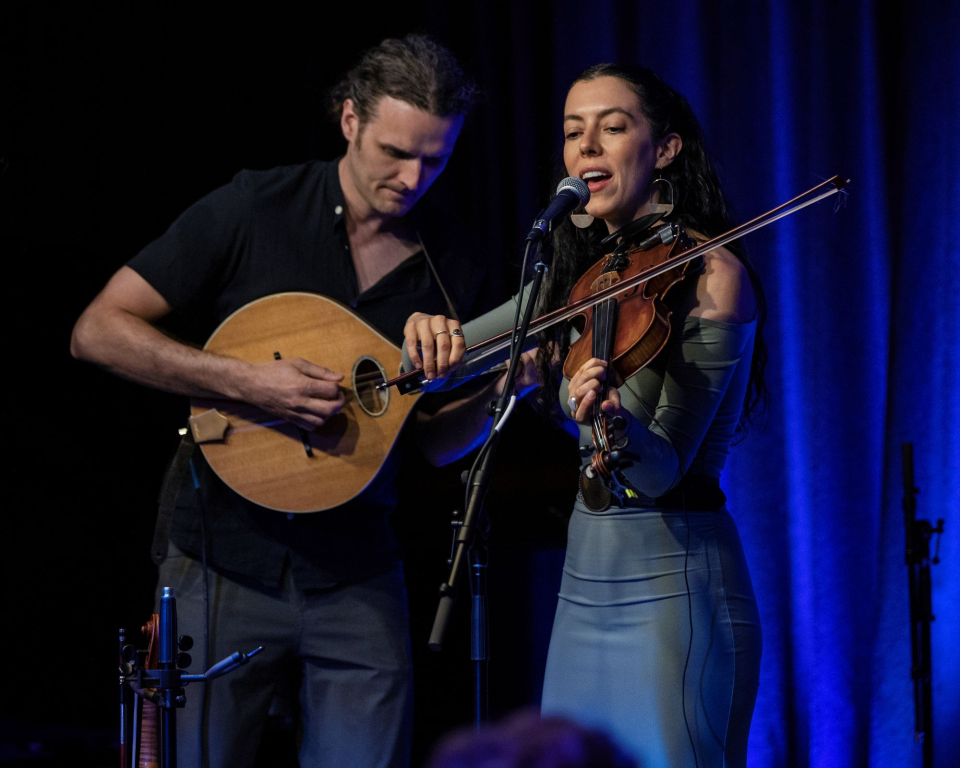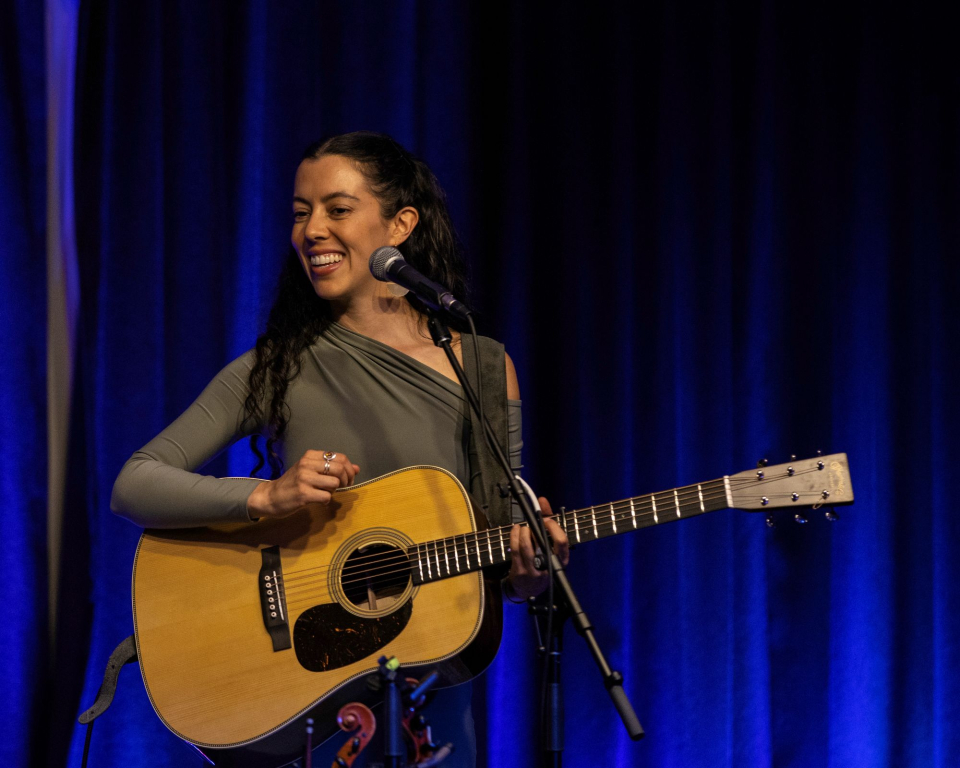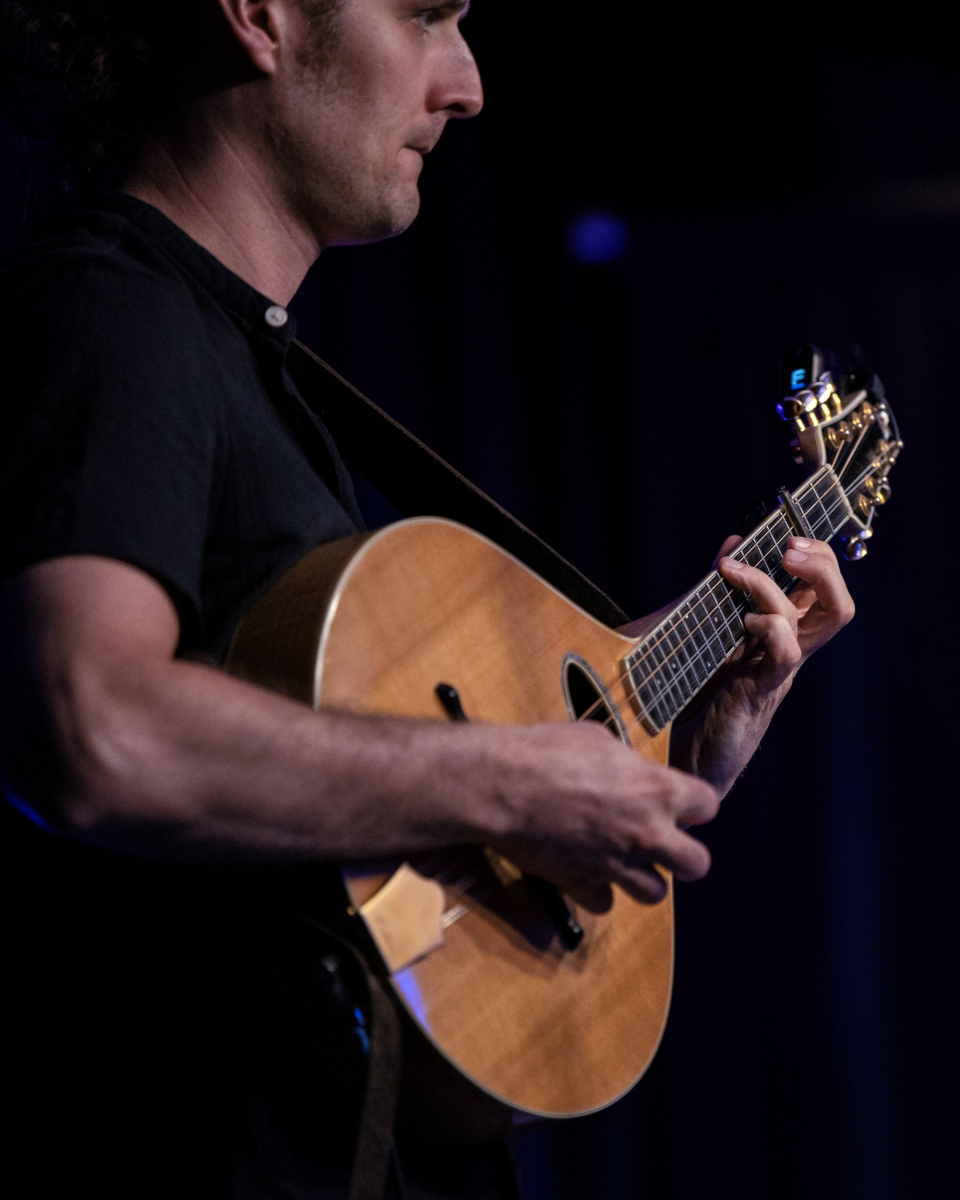Fiddler Lily Henley Talks Gear and Folk Music
When folk music artist Lily Henley performs, she delivers a variety of gifts to her audience — the beauty and emotional depth of her clear, far-reaching voice, an unusual instrumentation of fiddle, bouzouki and guitar, and the rare chance to be enveloped by the music of her Sephardic Jewish culture through songs sung in Ladino — an endangered language with about 100,000 native speakers globally. In her duo with bowed-string instrumentalist and singer Duncan Wickel, they craft a story of human experience by complimenting Ladino songs with American and Celtic folk music traditions.
Upon listening to “Oras Dezaoradas,” her album of Sephardic Jewish ballads, you may wonder how her singular style came about. It started with a childhood filled with music — her singing, songwriting and fiddle-playing sprouted from years of singing Sephardic music in Ladino with her family.
A life on the move also contributed to Henley’s work as a Ladino singer and folk musician. Henley’s father was a physician for the Indian Health Service, a position that relocated the family often — at least 10 times before Henley was age 10. In addition to living internationally, she lived among the Inuit in Alaska, the Hopi in Arizona and tight-nit neighborhoods of the Midwest — people and places with a strong sense of community.
“I have a diverse understanding of the world from all that moving and meeting so many people and being touched by many different cultures, and it just makes you really interested in your own culture,” says Henley. “I grew up with Sephardic identity, and at a certain point that entered the music that I was creating.”
As an adult she earned the Fulbright award and studied Ladino for a year in Paris — a city with one of the largest Sephardic populations. In her creative process, she writes fresh melodies for traditional Ladino songs and collaborates with native speakers when writing new material.
“I think elders and members of my community understand that it's absolutely essential that new art, new poetry, new songs, new versions of things be created,” she says.
Henley hopes that her music widens people’s appreciation for the beauty of culture. In Henley’s words, perhaps they’ll be intrigued by “pieces of music that feel familiar, and things that feel different.”
For the NAMM audience of music and gear lovers, Henley talks about the instrumentation and equipment she uses in her duo with Duncan Wickel.
Fiddle

My fiddle was given to me by my grandmother. She was born in 1911, and she was a really good fiddle player until her early 20s when she got married. She had bought this fiddle for about $15 on the street, and it’s an Italian violin made in Sicily.
I've been playing it since I was 13 years old. It has its sweet spots, and its things that are annoying, but I can't really imagine switching to any other instrument ever. It's a family heirloom that I'm lucky to have.
My fiddle has a lovely low end. It’s on the small side. I always notice the spacing on it feels different when I switch to somebody else's instrument.
It had cracks that have been repaired, that happened way before my grandmother even owned it. They don't affect its value. None of them are in important places. Something about it gives the instrument character. It's like it had a life before me that I don't know the entire story behind. It's a sweet-feeling instrument. And it has this beautiful, original red varnish that’s the style the maker put on it. It also has sparkles that are stuck in the varnish right where I was holding it when I was 13, 14, 15 years old. So, it's grown with me all my life, and it has all these little things from varying phases that I went through. It feels like me. I play it, and it feels like it's me that's being played.
Duncan has had quite a few different fiddles. The fiddle he plays now is a five-string fiddle by John Silakowski, which he bought from one of my closest friends, Brittany Haas, the fiddle player for the Punch Brothers. Silakowski was a great violin maker. He passed away a few years ago, and he was one of the early makers of the five-string fiddle. Duncan has had several different five-string fiddles. He always wants that extra string.
Guitar

I'm playing a friend's guitar. It’s a Martin 000-15, small-bodied, mahogany. I feel like I'm on my guitar journey. I'm in search for the right guitar for me. I'm looking for something that rings out and feels really sweet, because I'm not a loud player. I’m not using a flat pick or any kind of pick most of the time. I’m a bit of a sensitive sound. It may come down to a small-body guitar since it's easier to get onto the plane. I tend to travel with several instruments, and it's frustrating and stressful to fly. I’d like to find a guitar that feels like the right instrument and then buy a serious flight case and be able to put it under the plane and not have to worry too much. Duncan and I play so differently and look for different things in guitars that our ideal setup would be to tour with more than one guitar.
Duncan plays an Epiphone Texan from the 60s. It's a big dreadnought guitar. He tunes in a lot of strange cross tunings, so it works well for that and for playing all the different styles he plays.
Bouzouki

Duncan also plays a Trillium bouzouki. When Duncan and I play duo, we always play a lot of bouzouki. It's a driving, grooving instrument that came from the Greek and Turkish traditions. You see Greek bouzoukis that’re bowl backed. They usually have six strings that are tuned in three courses. We play an Irish bouzouki, which is an eight-stringed instrument with a flat back and looks like a cittern.
I find it so benignly fascinating that the bouzouki entered Irish music from Greek music. You know, Sephardic music doesn't have its own instrumental tradition, but it definitely borrows from neighboring traditions of music. And so a lot of the traditional songs have Turkish or Arabic microtonal sounds.
The bouzouki is very good in modal music, which is most of the music that I'm creating, and because it’s tuned in fifths, it doesn't force you to play the third in every situation. It allows you to have this modal sound.
I think that's a big part of why it became so popular in Irish music, and because Duncan and I both have a background in Irish music, along with other genres, it connects that sound for me into Sephardic traditional music and other music I’ve delved so deeply into.
Mics, Pickups and Preamps
My fiddle mic and Duncan's fiddle mic are both Bartlett onboard microphones. We both have Grace Design FELiX preamps. They have two lines. It's amazing, because if we're playing in our duo, I can plug both my Bartlett onboard mic and my guitar pickup into the same preamp and control everything sound wise.
Sound people, for instance, the sound person at the show at the Museum of Making Music is a great sound guy. So he immediately saw it and understood what was happening. And it can really help the sound be more in control.
And then, if we're playing as part of a bigger band — like Duncan tours with the band called Rising Appalachia, which I also toured with for years — and we need to use a pickup on our violins, we can put both the Bartlett and our L.R. Baggs violin pickup through the Grace Design FELiX and do a mix, and that allows me to have more of my mic sound on stage, which makes me play better because pickups just never sound the way you want. No matter how good they are, there's always a feeling of the violin no longer sounding quite the way you wanted it to sound. So we're big fans of the Grace Design FELiX.
▸ ▸ ▸
Discover Artists and Music Gear at The NAMM Show
NAMM, the member association for musical instrument manufacturers and retailers, invites artists like Lily Henley to perform at its Museum of Making Music in Carlsbad, California, to grow community appreciation for music and musicians. NAMM is globally renown for hosting the annual NAMM Show each January where music product innovators launch their latest musical instruments, accessories and pro audio products. Learn more about The NAMM Show and the benefits of NAMM membership.
About the Author
Jessica A. Baris is a writer on the marketing team at NAMM and editor of Playback Blog. She shares member stories, covers The NAMM Show and collaborates with industry experts to create content that educates and informs NAMM members. Baris leads a musical life as a Latin dancer, growing singer and player of instruments, including castanets, clave and tongue drum.
